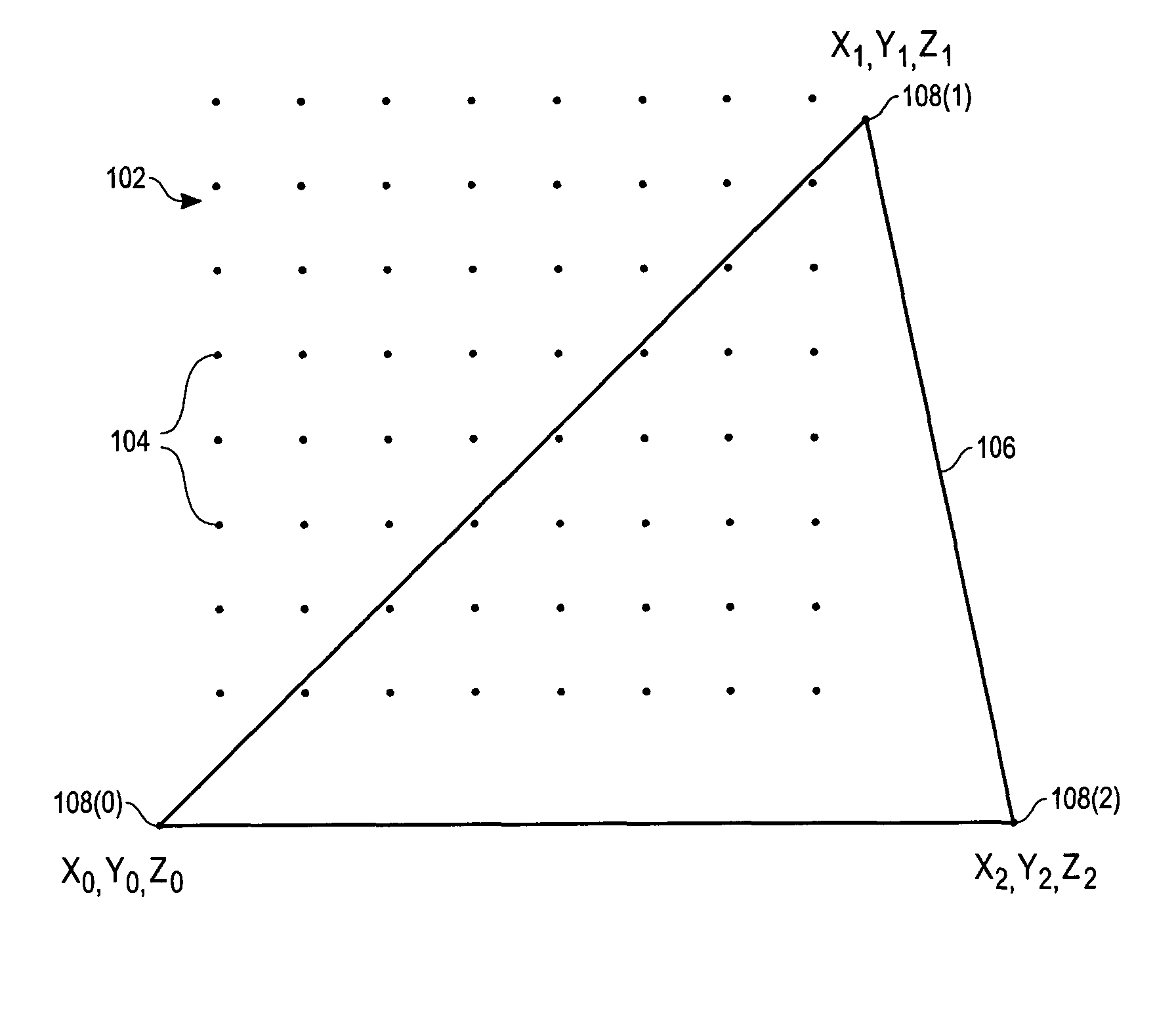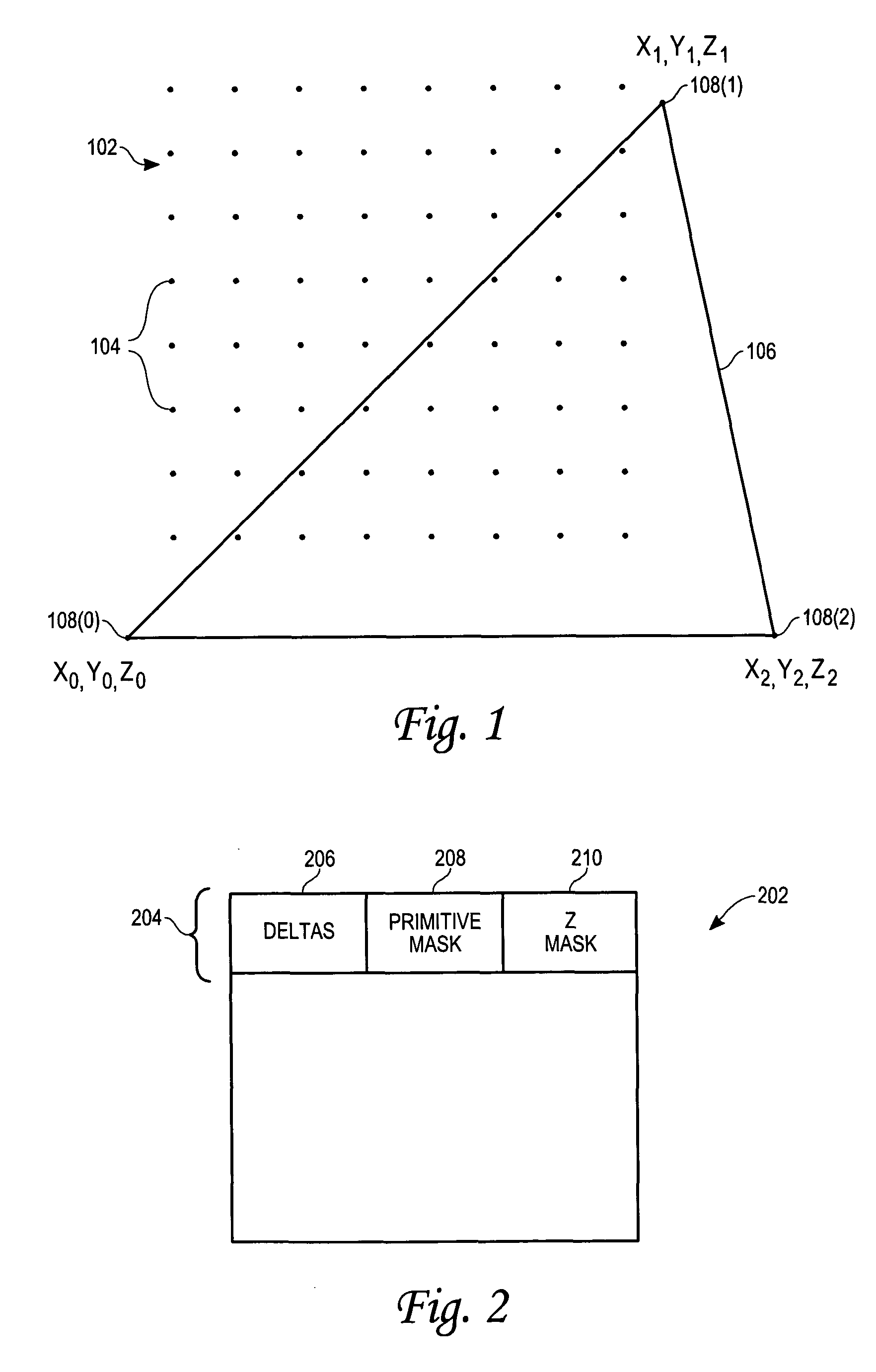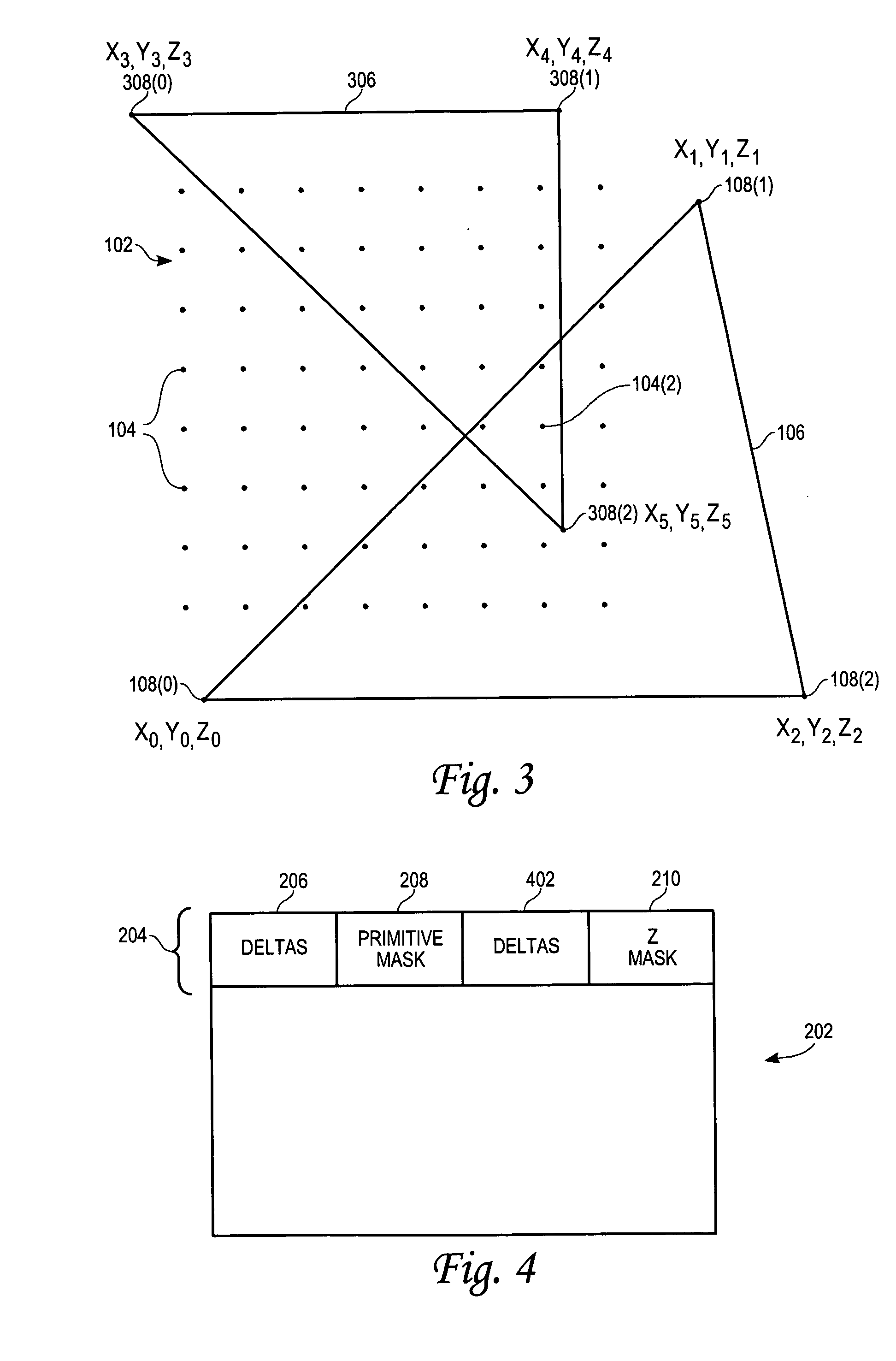Mechanism for reducing Z buffer traffic in three-dimensional graphics processing
a technology of three-dimensional graphics and buffers, applied in the field of computer graphics, can solve the problems of slow processing performance, huge amount of information, and large amount of traffic, and achieve the effect of reducing the amount of information stored less information in a z buffer, and reducing the amount of z buffer traffi
- Summary
- Abstract
- Description
- Claims
- Application Information
AI Technical Summary
Benefits of technology
Problems solved by technology
Method used
Image
Examples
embodiment
Sample Embodiment
With reference to FIG. 7, there is shown a graphics processing system 700 in which one embodiment of the present invention may be implemented. For the sake of simplicity, only components pertinent to the present invention are shown. System 700 may comprise one or more additional graphics processing components.
As shown, system 700 comprises a z buffer 702 for storing z related information corresponding to all of the tiles in a display (not shown). In one embodiment, z buffer 702 comprises an m number of memory sections 202, where m is an integer. Each memory section 202 corresponds to one of the tiles of the display, such that there is a one-to-one correspondence between a tile and a memory section 202. Since there are m memory sections 202, it follows that the display has m tiles. Each memory section 202 stores the z related information for its corresponding tile. In one embodiment, this z information may take the form of actual z values (i.e. is uncompressed), o...
PUM
 Login to View More
Login to View More Abstract
Description
Claims
Application Information
 Login to View More
Login to View More - R&D
- Intellectual Property
- Life Sciences
- Materials
- Tech Scout
- Unparalleled Data Quality
- Higher Quality Content
- 60% Fewer Hallucinations
Browse by: Latest US Patents, China's latest patents, Technical Efficacy Thesaurus, Application Domain, Technology Topic, Popular Technical Reports.
© 2025 PatSnap. All rights reserved.Legal|Privacy policy|Modern Slavery Act Transparency Statement|Sitemap|About US| Contact US: help@patsnap.com



